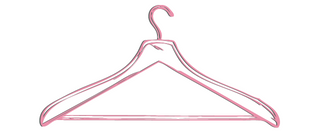Sustainability isn’t just a buzzword—it’s a vital practice that we all can adopt, especially in the world of dance. Unfortunately through the lense of sustainable fashion, the dance world is a heavy contributer to the linear fashion cycle, or what is most often referred to as fast fashion. Performance dancewear is typically made from synthetic materials (that are also imported out of poorly supervised conditions, hello ugly supply chains!) like nylon, spandex or polyester, where the latter can take up to 200 years alone to decompose. AND during that time, as it sits aimlessly in the landfill, it serves to add more toxins to our already polluted air.
The dance industry needs to step up and recognize how it is responsible for large amounts of clothing waste. The process of costuming for a single use (fundamentally supporting a linear fashion cycle) is not sustainable long-term. It is quite frankly setting up a tragedy for future dancers to come.
But there is a glimmer of hope on the dancewear horizon. We just have to recognize that it will take our collective effort, not one or two dance costume non-profits to get there. By taking immediate action, starting with more eco-friendly choices, we-as the dance community-can begin a new cycle, one that will significantly reduce our environmental impact.
Beginner’s Guide to the 7 R's of Sustainable Fashion: Extending the life of your dancewear
According to a survey by the American Chemical Society, 20% of clothing created and purchased in the US is never worn–and from 2000 after the end of COVID–fashion production has doubled.
Remember, that the absolute best thing you can do to reduce the amount of clothing waste accumulated in landfills everywhere is to start making the right choices today AND REDUCE your consumption.
1. Reduce: The First Step Towards Sustainability
Why Reducing Matters
The most effective way to enforce sustainability in the dance industry is by reducing the number of new items we need to purchase. By cutting down on consumption, we lessen the demand for raw materials and the energy needed to produce new items–ultimately leading to a smaller carbon footprint. As well, reducing consumption allows for all previously made dance items to be reworn as demand can be filled from products already in circulation.
Tips for Dancers
- Buy Quality Over Quantity: Invest in high-quality dancewear and versatile costumes that are durable and designed to last longer.
- Plan Ahead: Plan after the wear of a costume if there is a possible for reuse or a rental. This is why it is so important to choose versatile pieces that can be used across multiple performances.
- Eco-Friendly Dance Supplies: Opt for dance program supplies made from sustainable materials, reduce paper waste and compost when possible to minimize your environmental impact–influence studio members to do the same.
2. Reuse: Extend the Life of Your Dance Costumes
The Power of Reuse
Reusing dance costumes means wearing them multiple times for different performances or practice sessions without significant alterations. This not only saves money but also reduces waste. The best way to keep dance costumes out of the landfill is to give them a purpose.
How to Reuse Dance Costumes
- Rotation System: Develop a rotation system for your costumes, ensuring each one is used to its fullest potential.
- Mix and Match: Combine different pieces from various costumes to create new looks without buying new items.
- Secondhand Dancewear: Consider swapping costumes with fellow dancers or purchasing from secondhand stores. You can purchase our Sustainable Initiatives Guide ($10) which includes email templates and step-by-step instructions on how to initiate a clothing swap.
3. Repair: Fix Instead of Toss
The Importance of Repairing
Repairing extends the life of your dance costumes, reducing the need for replacements and minimizing waste. Minor repairs can make a big difference! You can enhance old dance costumes to give them a new life. This could also mean adding new embellishments, altering the design, or refreshing the color.
Simple Repair Tips
- Sewing Basics: Learn basic sewing techniques to fix small tears, reattach sequins, or adjust fittings. You can host a workshop or an event night.
- Professional Help: For more complex repairs, seek help from a professional tailor who specializes in dancewear–look for local businesses that might be interested in a group discounted rate, or loyalty program for your studio.
- Maintenance: Regularly check your costumes for any damage and address issues promptly to prevent them from worsening–this also includes spot cleaning too!
5. Repurpose: Transform Costumes for New Uses
Understanding Repurposing
Repurposing involves upcycling your old dance costumes by using the materials for a different purpose than originally intended. This often requires some modification but can result in unique and functional new items.
Ways to Repurpose Dance Costumes
- Practice Wear: Convert performance costumes into practice wear by making them more comfortable and durable.
- Accessories: Use fabric from old costumes to create hairpieces, sashes, or other dance accessories.
- Home Décor: Turn parts of old costumes into decorative items such as pillows, framed art, or quilt pieces.
6. Resale: Extend the Life Cycle of a Clothing Item
Why Resale Matters
Resale is an excellent way to extend the life cycle of dance costumes. By selling your old costumes, you not only recoup some of your investment but also provide other dancers with affordable, high-quality dancewear. This practice reduces waste and supports a circular economy. Reselling costumes is a popular option and promotes #2 Reuse.
How to Resell Dance Costumes
- Online Platforms: Use online platforms such as eBay, Poshmark, or specialized dancewear resale sites to list your costumes for sale.
- Local Dance Shops: Partner with local dance shops that may offer consignment options for selling gently used dance costumes.
- Social Media: Leverage social media groups and pages dedicated to dance communities where you can advertise your costumes for resale.
Now for the unfortunate truth about resale-this option is great, yes!! BUT, because of the nature of the dance industry, it is a system that enforces groups to dress the same. That means 10+ dancers shopping for the same item (most likely in different sizes). This can be kind of challenging when only one person is doing resale. Just take a look at any secondhand dance resale website and you will see the surplus of excellent condition items that are not being sold.
7. Recycle: The Last Resort for Sustainability
The Role of Recycling (not reuse!)
When a costume has truly reached the end of its life, recycling is the final option. Recycling is a form of downcycling because it involves breaking down the item into materials to create new products, usually with the incentive of minimizing waste sent to landfills. THIS IS A BIG ISSUE with dance costumes as they are so intricately designed and are fabricated from synthetic material–the kind that actually does not break down!
How to Recycle Dance Costumes
- Textile Recycling Facilities: Find local facilities that accept textiles for recycling. (This is what we do, please consider making a monetary donation to help us see this through!)
- Upcycling Projects: Get involved in community projects that upcycle old dancewear into new items.
- Green Dance Costumes: Support brands that use recycled materials in their dancewear production or design your own costumes from natural fabrics.
Additional “R” – Be Responsible! Make Ethical and Transparent Choices
Make more ethical choices in both purchasing and disposal. This involves supporting brands that prioritize sustainability and ensuring your old dance items are disposed of properly. Care! The Earth is your home! Start asking questions and holding big brands responsible for safer and sustainable practices!
What does this look like?
- Use Your Purchasing Power: Purchase from companies committed to sustainable and ethical practices.
- Look For Transparent Supply Chains: Choose brands that are transparent about their production processes and material sourcing. This is something they should be proud of!
- Community Involvement: Educate and involve your dance community and encourage the brands your studio supports to be those that maintain ethical, sustainable practices.
Your Role in Sustainable Dance Fashion
By embracing the 7 R’s of sustainable fashion, you can significantly reduce your environmental impact and promote a zero waste dance studio. The journey begins with reducing consumption and extends through reusing, repairing, renting, repurposing, reselling, and recycling your dancewear. Remember, every small step counts, and your efforts will not go unnoticed. You may just inspire others in the dance community to follow suit.
Now, let’s dance our way to a more sustainable future!

